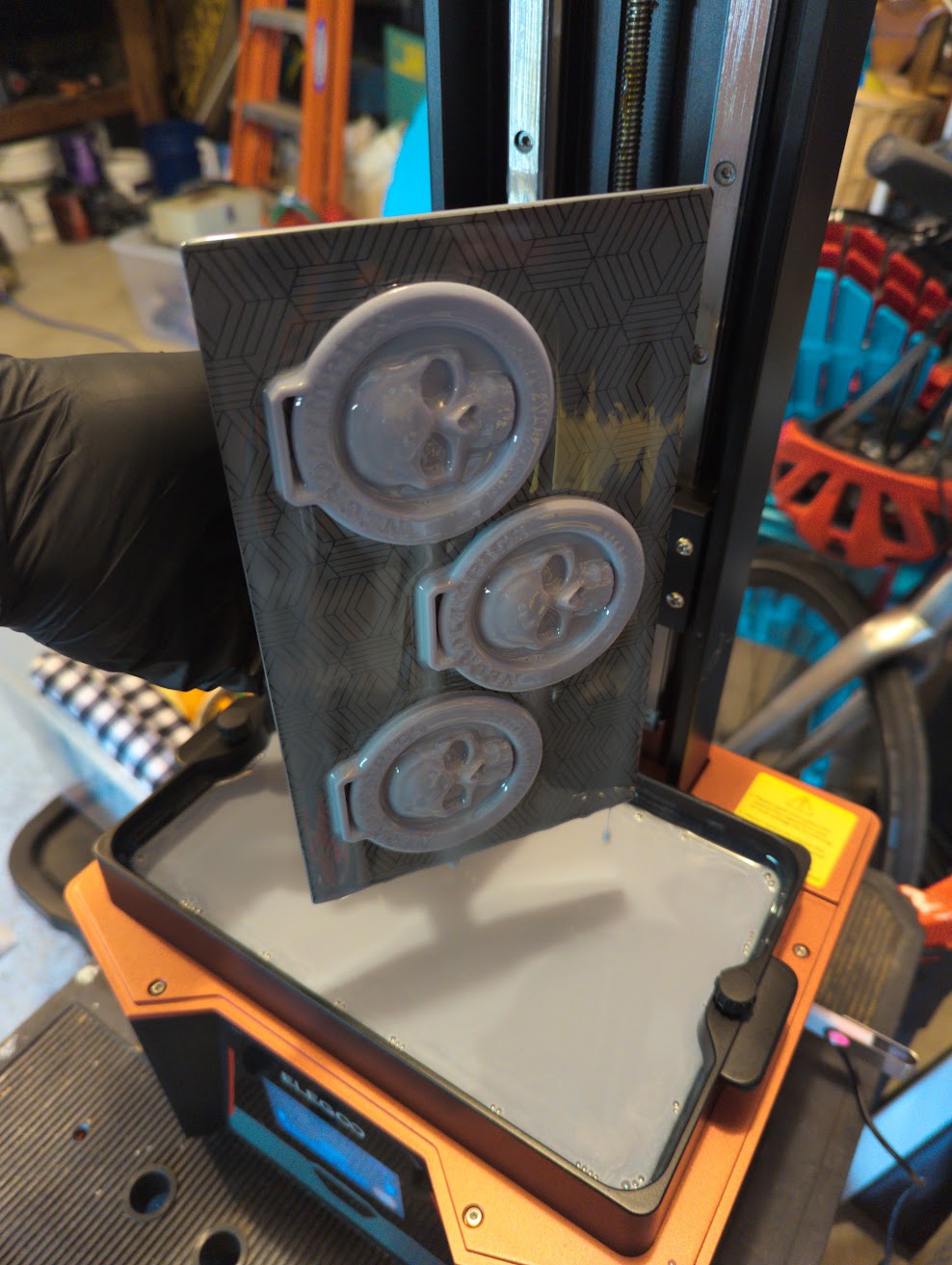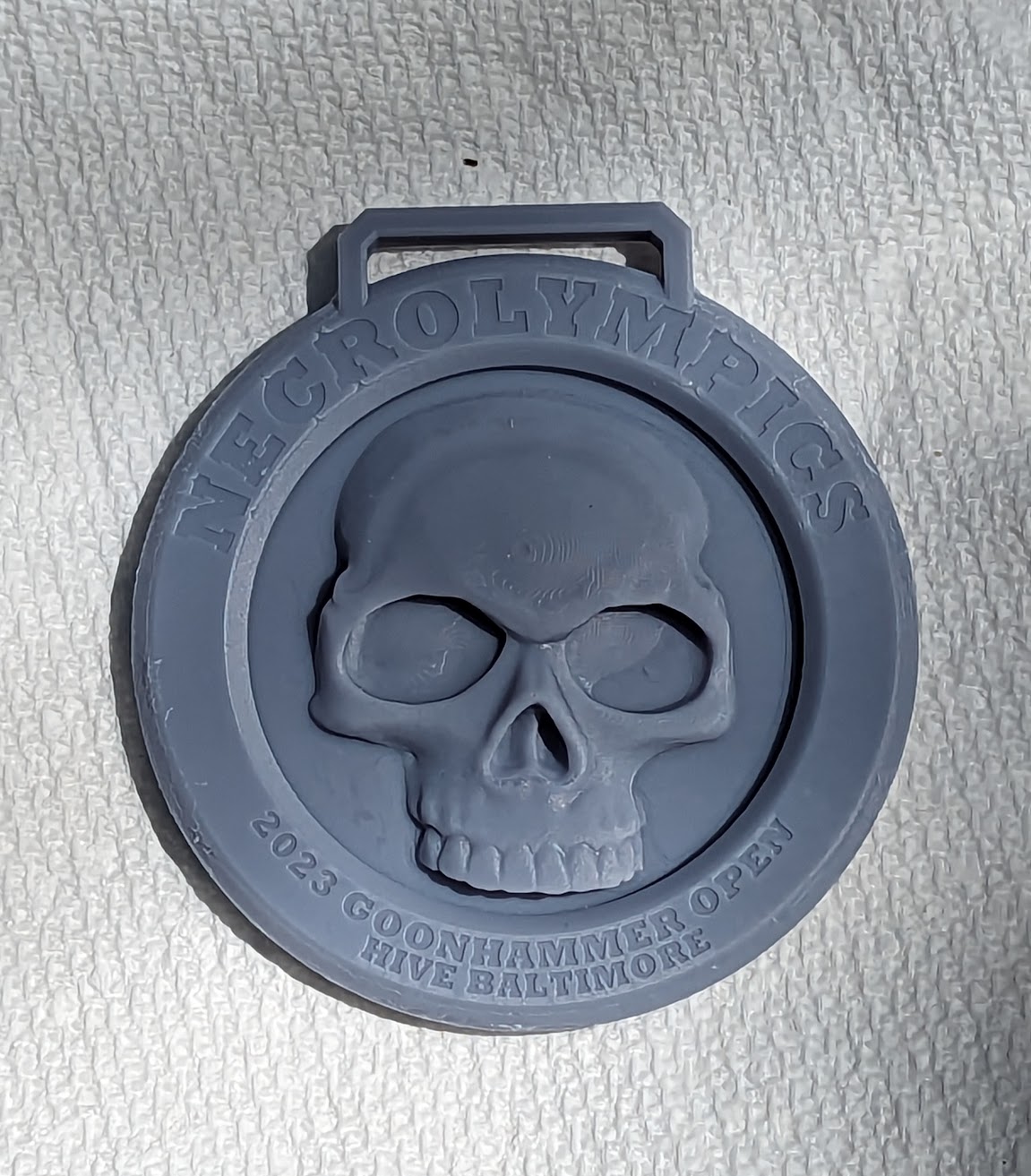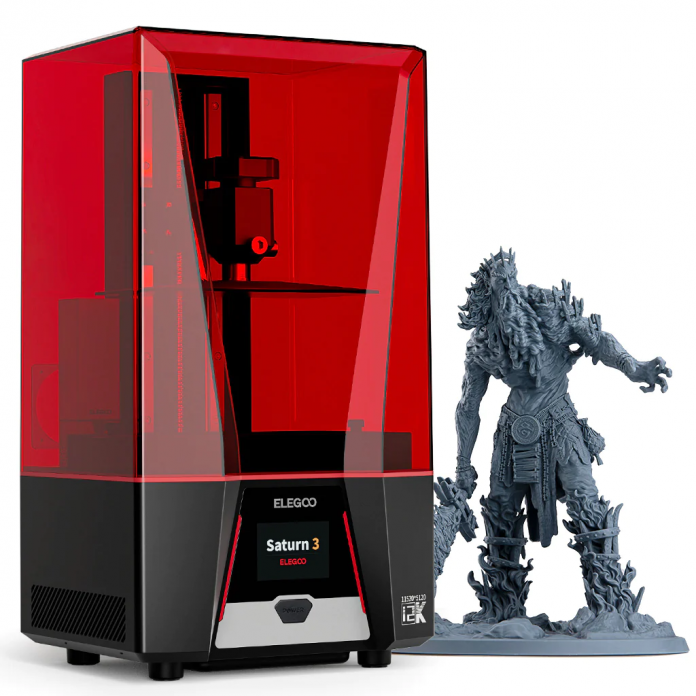Back in June we reviewed the Mars 3 and Mercury 2 washing station. We then followed up with the Mars 4 Ultra, which is an amazing printer. Now we’re back with the Elegoo Saturn 3 12K! We would like to once again thank Elegoo for generously providing units for us to review, and as before they had no influence over the article itself.
When it comes to additive manufacturing, there are two universal truths.
- It is never as easy as it looks.
- You will eventually want a bigger printer.
In the case of resin printing, the Saturn 3 12K addresses these two challenges about as well as any printer I have come across. Elegoo has taken all of the lessons learned from the Mars line and made everything bigger and better. For the kind of people who don’t need to read anything other than the bottom line, here it is: if you’re looking for a resin printer you should just buy this one. You can go to Elegoo’s website and use the code MKT_Goonhammer to get a further 10$ off any order over 100$.
The Specs
The Saturn 3 12K features a 12K mono LCD projector with a pixel resolution of 11520 x 5120. Across the 218.88 x 122.8 mm build plate this translates to a resolution of 19 μm in the X direction and 24 μm in the Y direction. This is only a few microns larger than the 18 μm resolution of the Mars 4 and is well below the threshold that a human eye can detect. The maximum build height is 250 mm, and the vertical printing speed can be up to 70 mm per hour. As with the Mars line the unit features a Fresnel collimating light source which emits a uniform 405 nm wavelength curing light evenly over the surface of the build plate. This means that every region of the plate will get the same light and there is no variation across the surface. The build plate itself is laser-carved with a surface that provides excellent adhesion; I can confirm that all of my print failures have been a function of supports breaking and not detachment from the bed itself.
The printer comes fully assembled and includes everything you would need to start, including a USB air purifier, flash drive, and ancillary supplies such as a scraper, funnel, mask, gloves, and backup screws and tools. You will need to buy your own resin as well as isopropyl alcohol for cleaning. Elegoo provided me bottle of their ABS-like Resin V2.0 Grey, which is significantly tougher and more flexible than the traditional resin. It’s the same price as the other material and the added flexibility makes it an easy choice for me to recommend. All of my builds used the Elegoo official 50 μm default settings in Lychee slicer. The optimal build angle seems to be 45 degrees regardless of whether the surface is angled against the X or Y direction.

User Experience
Setting up the printer is no different than any other resin printer. You remove the unit from the packaging (check the unit when you take it out; I found some glue stuck to the elevator bar which was easy to remove), plug it in, and connect the build plate to the arm. After loosening the two massive leveling screws, you home the build plate and use the provided piece of paper to set the appropriate height. You then lock the leveling screws in place, install the resin tank, and you’re good to go. The filter plugs into the provided USB port inside the build volume and you can start with the provided rook immediately.
I want to spend a moment singing the praises of those large leveling screws. The fact that they’re huge doesn’t just mean that it’s easy to insert an Allen wrench and get things aligned. I have done several builds across the span of months and I haven’t had to re-level the plate a single time. It just works. So long as you’re not exerting too much force while trying to remove parts from the build plate (hold the plate and not the arm mount) it’s unlikely that you’re going to dislodge anything. That means you can run a build and immediately run another one once the plate is clean. This alone makes this printer worth the money.

The image above shows three large medals that I was able to print on the plate of the Saturn 3 12K with room to spare; a smaller printer like the Mars would be able to barely fit two. The level of detail on the printer is very high and you can easily make high quality parts for miniatures and game pieces. The size of the printer also makes it viable for larger functional parts as well, especially when combined with tougher resins that aren’t going to shatter if you drop them. In the case of failed builds stuck to the FEP you can use the “tank clean” feature to cure the entire bottom layer which can then be removed in a few seconds.
Unfortunately the size of the printer also produces my only complaint; it’s very easy to drip resin outside the area of the tank if you’re not careful. With some practice you can avoid it, but be prepared to wipe up errant drops with a rag and IPA. The top of the printer build plate also features the same sharp corners as that on the Mars line, which means that resin will poll around the edges but not drip down as a result of surface tension. These are minor issues and in no way detract from the amazing quality of this product. You can mitigate things by waiting a bit before removing the plate, and using a scraper to push any excess material off the top of the plate.
Pros and Cons
- Pro: The large diameter leveling screws mitigates the risk of shifting the build plate when removing parts, which means you won’t need to level the plate as much.
- Pro: The damn thing just works, and it works extremely well. Seriously this thing makes parts that are just as good as a $2500 Formlabs printer.
- Pro: You can leave the ABS-like resin in the tank for several months and nothing bad will happen because of the UV-blocking cover.
- Pro: The product continues to show off the amazing build quality and support equipment that Elegoo is known for.
- Con: It’s so big that you need to be careful about errant resin droplets falling outside the area of the tank.
- Con: The build plate won’t fit in the Mercury Plus V2.0.
A Note on Safety
Resin printing is easy, but there are hazards that absolutely must be respected. The resins themselves are toxic and must be handled using gloves in a well ventilated area. Items contaminated with uncured resin poses an environmental hazard and should be cured (leave it out in the sun) before disposing as general trash. Uncured resins are particularly hazardous to marine life and should not be washed down the drain. When washing, high proof isopropyl alcohol is extremely flammable and should be kept away from heat sources and open flames. These risks are increased when working with the larger volume of the Saturn. There’s more resin to handle, and you need more IPA to wash everything. Please be careful.

Want a resin printer? Get this one.
With the holidays around the corner, if you’re looking to get a resin printer then the Saturn 3 12K is the one I would recommend. The build quality is fantastic, the size covers a lot of space, and quality of life features like the massive leveling screws make the system just work. Once you get used to dealing the the risk of errant resin droplets there’s very little about this printer that you won’t like. You can purchase the Saturn 3 12K on Elegoo’s website and use the code MKT_Goonhammer to get a further 10$ off any order over 100$.
We would once again like to thank Elegoo for generously providing the printer and resin for us to review.
Have any questions or feedback? Drop us a note in the comments below or email us at contact@goonhammer.com.



You must be logged in to post a comment.